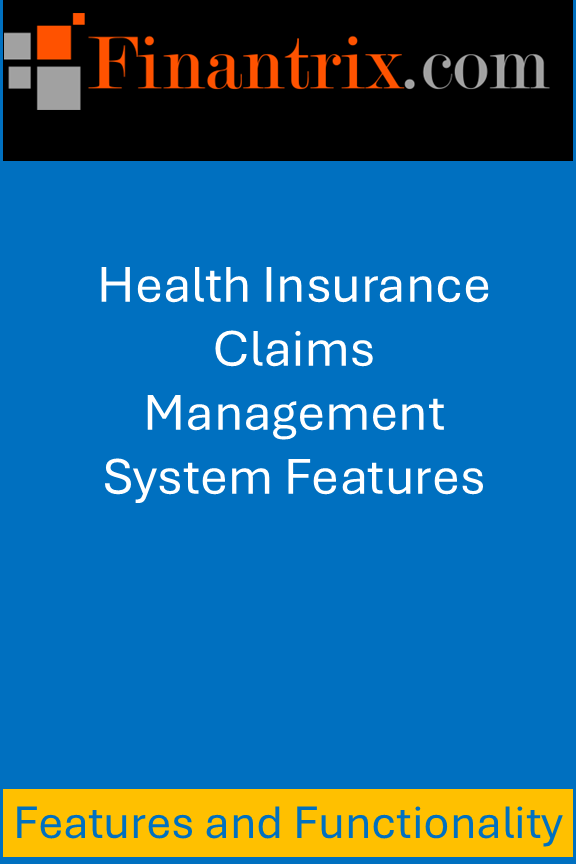Health Insurance Claims Management System Features
Price range: U.S. $299 through U.S. $599
Product Description

The Health Insurance Claims Management System Features document is a detailed, pre-built feature matrix for health insurance claims management software. Delivered in an editable Word/PDF format, it outlines essential and advanced capabilities across claims intake, adjudication, member and provider services, analytics, compliance, integration, and customer engagement. It serves as a practical tool to document requirements, develop RFPs, evaluate vendor platforms, and benchmark existing systems, supporting health insurers in planning or assessing their claims technology strategies.
This document presents a comprehensive feature list for health insurance claims management software platforms, developed as a practical, customizable tool for health insurers, TPAs, technology teams, and consulting partners. As the health insurance landscape grows increasingly complex — shaped by evolving regulatory frameworks, rising consumer expectations, the proliferation of digital health data, and a heightened focus on fraud prevention — robust claims systems have become essential. However, clearly defining what such a platform should deliver can be challenging.
Modern claims software goes well beyond basic intake and payment processing. To meet today’s demands, systems must handle multi-channel claims submissions (spanning electronic data, paper, phone, fax, and mobile), integrate seamlessly with provider EHRs, automate eligibility checks, and ensure early fraud detection. They must support advanced claims adjudication workflows — with automated rule-based engines, coordination of benefits, clinical decision support, complex payment calculations, and integrated medical reviews.
The platform also needs to provide sophisticated capabilities for managing member and provider services. This includes customer support across multiple channels, provider network administration, real-time eligibility management, wellness program integration, and tools for handling appeals, grievances, and complex inquiries. On the data side, robust analytics and business intelligence functions are indispensable — enabling predictive forecasting, fraud detection, provider performance evaluations, and population health insights.
Critically, these systems must maintain rigorous compliance and quality assurance frameworks, with audit trails, automated regulatory reporting, policy and accreditation tracking, and built-in quality checks. Strong data security, privacy safeguards, and HIPAA compliance are non-negotiable. As insurers continue to modernize, advanced technology integrations — from EHR interoperability and telehealth coordination to predictive modeling, AI-driven risk analysis, and blockchain — increasingly shape competitive differentiation.
This feature list distills these requirements into a structured framework, spanning:
- Claims Intake & Registration: Multi-channel submission, eligibility checks, early fraud detection, and document management.
- Claims Adjudication & Processing: Automated adjudication, clinical reviews, payment calculations, COB, fraud detection, and appeals management.
- Member & Provider Support: Customer service, provider network tools, member health programs, eligibility management, and inquiry resolution.
- Data Management & Analytics: Claims and utilization analytics, provider performance tracking, predictive models, and fraud detection analytics.
- Regulatory Compliance & Quality: Audit-ready compliance monitoring, policy management, accreditation tracking, and quality assurance.
- Technology & Integration: EHR and telehealth integration, scalable architecture, data security, portals, mobile access, and business intelligence.
- Customer Experience & Innovation: CRM tools, personalized engagement, loyalty programs, digital channels, and new product innovation.
This document acts as a springboard for requirement workshops, RFP creation, vendor evaluations, and internal assessments. It eliminates the need to build such lists from scratch, accelerates discussions by offering a structured starting point, and helps ensure no critical functionality is overlooked. By tailoring this feature set to their unique needs, organizations can more effectively benchmark current systems, define future-state requirements, and drive successful technology selection or enhancement initiatives.
Stipulations:
- As the Financial Advisor Workstation Features and Functions List is a digital product, it is sold as-is, and Finantrix will not accept any returns
- Depending on the size and complexity of your firm, the roles and responsibilities of advisors, some or all of the capabilities may not be relevant to you.
- Consultants, who may wish to use the deliverable at several clients, have different terms and price.
- Sold on an as-is basis and no warranties
- This sale does not include implementation help or support. If you need professional services assistance, please contact us.
- Please review our standard terms of service.
Got More Questions? Drop us a Line
Need Customization Help? Contact our Advisory Services
Health Insurance Claims Management System Features
Price range: U.S. $299 through U.S. $599

